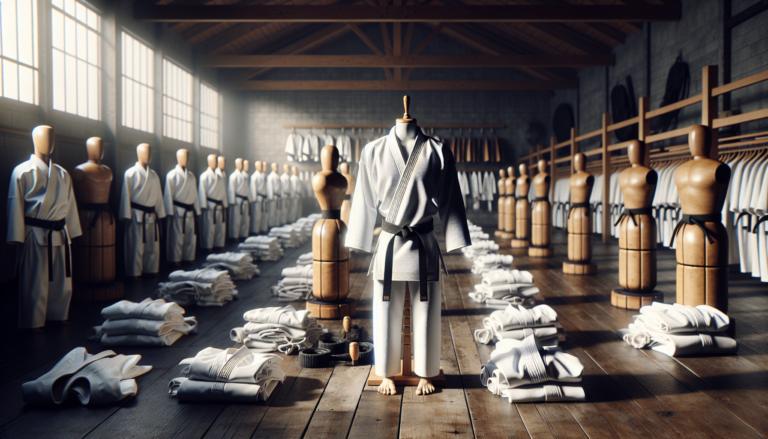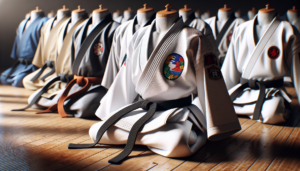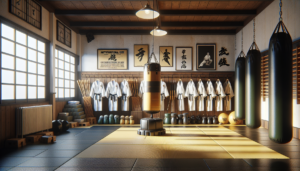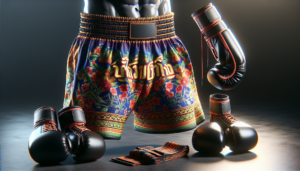Introduction to Karate
Karate is a martial art that combines armed and unarmed combat techniques, emphasizing discipline, mental focus, and physical fitness. With roots in ancient combat practices and philosophies such as Buddhism, Taoism, and Bushido, karate offers a complex and rich tradition for those seeking to learn this art.
What is Karate?
Karate is a martial art that originated in Japan around 400 years ago, derived from Chinese Kung Fu. It involves a variety of striking techniques using the hands, feet, elbows, and knees, as well as defensive blocks and evasive body movements. Beyond the physical aspects, karate also emphasizes peace, confidence, and humility rather than violence.
History of Karate
The development of karate is intertwined with the history of Japan and the influence of Chinese martial arts. Karate evolved in the Ryukyu Kingdom, now modern-day Okinawa, which served as a trading hub between Japan and China. This allowed the exchange of martial arts techniques and philosophies, shaping the foundation of what would become karate.
Benefits of Learning Karate
Learning karate offers numerous benefits for the mind and body:
- Improved physical fitness, strength, and flexibility
- Increased focus, discipline, and mental clarity
- Greater self-confidence and self-esteem
- Enhanced self-defense skills
- Stress relief and emotional well-being
Karate training emphasizes the simultaneous development of the mind, body, and spirit, promoting a holistic approach to personal growth and well-being.
Getting Started with Karate
Choosing the Right Karate School
When starting your karate journey, it’s essential to find a reputable karate school with qualified instructors. Research local dojos (training halls) and read reviews from current or former students. Consider factors such as the school’s lineage, the instructor’s qualifications, and the overall atmosphere of the dojo.
Essential Karate Gear
While karate does not require extensive equipment, there are a few essential items you’ll need:
- Karate gi (uniform)
- Belt (obi)
- Mouth guard
- Groin protector (for males)
- Hand and foot pads (for sparring)
Most dojos will provide guidance on where to purchase these items or may even sell them directly.
Understanding Karate Belts and Ranking
Karate employs a ranking system using colored belts to indicate a student’s progress and skill level. The order of belts may vary between styles, but a common sequence is:
| Belt Color | Rank |
|---|---|
| White | Beginner |
| Yellow | 8th Kyu |
| Orange | 7th Kyu |
| Green | 6th Kyu |
| Blue | 5th Kyu |
| Purple | 4th Kyu |
| Brown | 3rd Kyu |
| Black | 1st Dan and above |
Progress through the ranks is achieved by demonstrating proficiency in karate techniques, forms, and sparring, as well as displaying the mental discipline and character expected of a karateka (karate practitioner).
Basic Karate Techniques
Karate Stances
Stances are fundamental postures in karate that provide stability, balance, and power when executing techniques. Some basic stances include:
- Natural stance (shizentai)
- Front stance (zenkutsu dachi)
- Back stance (kokutsu dachi)
- Horse stance (kiba dachi)
- Cat stance (nekoashi dachi)
Mastering stances is essential for developing proper form and transitioning between techniques effectively.
Basic Karate Punches and Kicks
Karate incorporates a wide array of punching and kicking techniques, each designed for specific purposes and targets. Some fundamental techniques include:
| Punches (tsuki) | Kicks (geri) |
|---|---|
| Straight punch (choku-zuki) | Front kick (mae geri) |
| Reverse punch (gyaku-zuki) | Side kick (yoko geri) |
| Upper-cut punch (age-zuki) | Roundhouse kick (mawashi geri) |
| Back fist strike (uraken) | Back kick (ushiro geri) |
Developing proper form and power in these techniques requires consistent practice and guidance from a qualified instructor.
Karate Blocks and Strikes
In addition to punches and kicks, karate employs various blocks and strikes using other parts of the body, such as:
- Knife hand block (shuto uke)
- Rising block (age uke)
- Downward block (gedan barai)
- Elbow strike (empi uchi)
- Palm heel strike (teisho uchi)
Learning to execute these techniques effectively is crucial for self-defense applications and overall proficiency in karate.
Practicing Karate
Setting Up a Practice Routine
Consistency is key when learning karate. Establish a regular practice routine that includes attending classes at your dojo and training at home. Aim to practice at least a few times a week, incorporating:
- Warm-up exercises and stretching
- Basic techniques and combinations
- Kata (forms) practice
- Conditioning exercises
Remember, progress takes time, so be patient and persistent in your training.
Common Mistakes to Avoid
As a beginner, it’s essential to be aware of common mistakes to avoid:
- Sacrificing form for speed or power
- Neglecting proper stances and footwork
- Forgetting to breathe properly during techniques
- Comparing your progress to others
- Skipping fundamentals in favor of advanced techniques
Stay focused on your own journey and trust the guidance of your instructors to help you improve.
Tracking Your Progress
Tracking your progress is an important part of your karate journey. Keep a training journal to record:
- Techniques and forms learned
- Personal goals and milestones
- Reflections on challenges and breakthroughs
- Feedback from instructors
Regularly reviewing your progress can help you stay motivated and focused on your karate training.
Advanced Karate Training
Learning Karate Forms (Kata)
Kata are pre-arranged sequences of techniques that simulate combat situations. They serve as a crucial tool for:
- Developing proper form and technique
- Improving balance, coordination, and timing
- Internalizing the principles of karate
- Preserving the traditional aspects of the art
As you progress in your training, you will learn increasingly complex kata, building upon the fundamentals you’ve mastered.
Sparring and Self-Defense
Sparring (kumite) is a controlled form of fighting that allows you to apply your techniques against a live opponent. It is essential for developing:
- Timing and distance control
- Reflexes and adaptability
- Strategy and decision-making skills
- Mental and physical resilience
In addition to sport-oriented sparring, karate also emphasizes practical self-defense applications, teaching you how to effectively protect yourself in real-world situations.
Participating in Karate Competitions
As you advance in your karate training, you may have the opportunity to participate in competitions. These events can range from local tournaments to international championships, and may include:
- Kata competitions
- Sparring competitions
- Team events
- Breaking demonstrations
Competing can be a great way to test your skills, learn from other practitioners, and push yourself to new levels of achievement.
Conclusion
Recap of Key Points
Learning karate is a challenging but rewarding journey that offers numerous benefits for the mind, body, and spirit. By understanding the basics of karate, establishing a consistent training routine, and staying dedicated to your practice, you can make steady progress in your skills and personal development.
Next Steps in Your Karate Journey
As you continue your karate journey, remember to:
- Stay curious and open to learning
- Embrace the challenges and setbacks as opportunities for growth
- Cultivate humility, respect, and discipline both in and out of the dojo
- Support and learn from your fellow karateka
- Explore the rich history and philosophy behind the art
With dedication and perseverance, you can unlock the transformative power of karate and embark on a lifelong path of personal growth and mastery.






